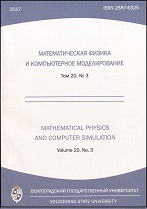|
This article is cited in 4 scientific papers (total in 4 papers)
Modeling, informatics and management
The unification of microvawe radio thermometry method
E. A. Mazepa, O. V. Grishina, V. V. Låvshinskiy, H. M. Suleymanova
Volgograd State University
Abstract:
Mathematical description of the diagnostic features, finding their quantitative characteristics, as well as identifying new diagnostic features are very important stages in creating an effective intelligent advisory system. The paper presents a unification method of analyzing information and finding a universal algorithm for searching highly informative diagnostic features from the data of microwave radiometry. The classification of thermometric diagnostic features indicating different anomalies of temperature fields have been classified. Modern methods and possibilities of treating many types of diseases are such that achieving a positive result is possible only if they are detected at the earliest possible stage of development. In addition, it is known that many pathological processes change the normal temperature distribution both on the surface of the body and inside it. Moreover, many structural changes in tissue are preceded by an abnormal temperature change. T his fact is the basis of the diagnostic method - microwave radio thermometry (RT M-method), which is of exceptional interest for the early diagnosis of cancer and a number of other pathologies. The proposed approach allows to obtain new medical knowledge regarding the behavior of the temperature fields of patients. Namely, the study of differential analogues of second derivatives of temperature’s functions has discovered a whole group of qualitatively new diagnostic signs. The application may well improve the results of classification of the expert system. However, the justification of the results will be based on high information characteristics. The authors also note that the real sensitivity and specificity of the advisory system should be identified through trial operation, i.e. more interesting is the question of how much they improve the diagnostics performed by specialists.
Keywords:
data mining, microwave radio thermometry, intelligent advisory systems, highly informative features.
Citation:
E. A. Mazepa, O. V. Grishina, V. V. Låvshinskiy, H. M. Suleymanova, “The unification of microvawe radio thermometry method”, Mathematical Physics and Computer Simulation, 20:6 (2017), 38–50
Linking options:
https://www.mathnet.ru/eng/vvgum213 https://www.mathnet.ru/eng/vvgum/v20/i6/p38
|

| Statistics & downloads: |
| Abstract page: | 115 | | Full-text PDF : | 45 | | References: | 37 |
|




 Contact us:
Contact us: Terms of Use
Terms of Use
 Registration to the website
Registration to the website Logotypes
Logotypes








 Citation in format
Citation in format 
